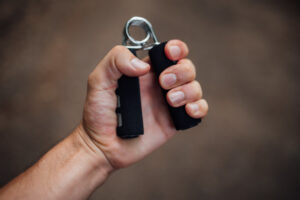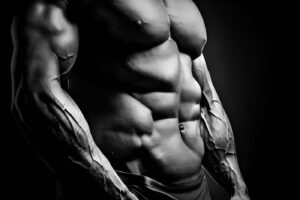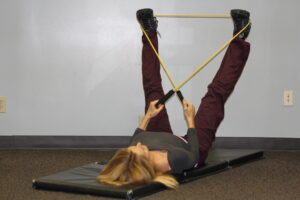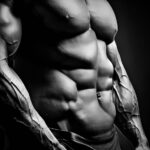Harnessing the power of a well-structured upper body workout is a pivotal part of achieving a balanced, muscular, and functional physique. Whether you’re into bodybuilding, general fitness, or are a beginner looking to start building your upper body strength, understanding and effectively targeting the chest, shoulders, and triceps are fundamental to your success. This comprehensive guide will walk you through the most effective exercises, workout strategies, and important tips to sculpt your upper body to peak condition.
Understanding the Upper Body Muscles
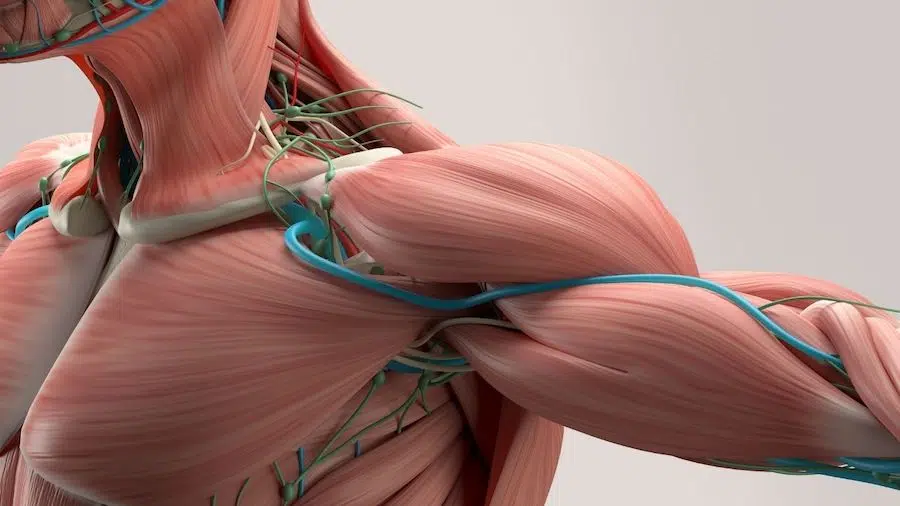
Regular physical activity can improve your muscle strength and boost your endurance.
Before you power through sets and reps, it’s crucial to grasp the anatomy of the areas you’ll be targeting.
Chest Muscles (Pectorals)
The Pectoralis Major is a thick, fan-shaped muscle, covering much of the upper chest. It originates from the clavicle, down the sternum, and across the ribs and then fans out across the chest, inserting into the humerus. This muscle is crucial not only in the bench press but also in push-ups and dips. It aids in bringing the arms together and rotating them inward. The Pectoralis Minor lies beneath the major, smaller and thinner, playing a vital role in movements such as scapular depression, protraction, and downward rotation.
Shoulder Muscles (Deltoids)
The Anterior Deltoid is at the front of the shoulder, responsible for shoulder flexion and assists in pressing overhead, critical for exercises like front raises and military press. The Lateral Deltoid, found on the side of the shoulder, is key in shoulder abduction, instrumental to achieving a broad-shouldered look, and is targeted with movements like lateral raises. The Posterior Deltoid at the back of the shoulder plays a role in shoulder extension and horizontal abduction, essential for exercises like reverse flyes and face pulls, ensuring comprehensive shoulder development.
Triceps Brachii
The Lateral Head of the triceps contributes to the horseshoe shape, becoming prominently engaged during arm extension against resistance, important for exercises like tricep pushdowns and bench dips. The Medial Head, although not as visible, plays a crucial role in the final sign of elbow extension, stabilizing the arm during fine movements. Lastly, the Long Head, which also aids in shoulder adduction and extension, is targeted through exercises like overhead triceps extensions and skull crushers, contributing greatly to the bulk of the upper arm.
Workout Plan
To optimally train your upper body, we’ll go through effective exercises for each of the targeted muscle groups. I’ve provided the vidoe demonstrations from the youtube, of which I have found very simple and easy to understand.
Chest Exercises
Bench Press
The quintessential chest exercise, the bench press is a compound movement that primarily targets the pectoralis major. Whether performed with a barbell or dumbbells, it’s a staple for building upper body strength and size. To execute a bench press, lie on a bench with your feet flat on the ground. Grip the barbell slightly wider than shoulder-width apart. Lower the bar to your mid-chest, then press it back up to full extension, focusing on using your chest muscles throughout the movement.
Push-Ups
An excellent bodyweight alternative to the bench press, push-ups work your chest, shoulders, and triceps. They promote functional strength and can be done anywhere. Begin in a plank position with your hands slightly wider than your shoulders. Keeping your body in a straight line and engaging your core, lower yourself until your chest nearly touches the floor. Push back up to the starting position, maintaining a strong plank throughout the exercise.
Chest Flyes
This isolation exercise stretches and contracts the pectorals, providing targeted work for a full and rounded chest. Flyes are typically performed with dumbbells, cables, or machines. To perform a dumbbell fly, lie on a bench with a dumbbell in each hand, palms facing each other. With a slight bend in your elbows, open your arms wide to the sides until your elbows are slightly below your shoulders. Bring the dumbbells together in a wide arc, contracting the chest at the top of the movement. Ensure the movement is smooth and controlled to maximize engagement of the chest muscles.
Shoulder Exercises
Shoulder Press
The shoulder press, executed either seated or standing, is a foundational compound movement targeting the anterior deltoids. When performed with a barbell, it engages the shoulders in a uniform manner, promoting balanced growth and strength. Meanwhile, using dumbbells allows for a greater range of motion and individual muscle focus, including the stabilizing muscles of the upper body. Proper form is crucial to maximize benefits and minimize injury risks. Ensure your back is straight, and press the weight directly overhead, avoiding arching your lower back excessively. This exercise not only builds shoulder mass but also enhances functional upper body strength crucial for everyday activities.
Lateral Raises
Lateral raises are pivotal for sculpting the shoulder’s side or lateral deltoids, contributing to the sought-after broad-shouldered, tapered appearance. To perform, stand or sit with a pair of dumbbells at your sides, palms facing inward. Keeping a slight bend in the elbows, lift the weights out to your sides until your arms are parallel with the floor, then slowly lower them back down. This exercise is best performed with lighter weights for higher repetitions to avoid putting undue stress on the shoulder joints. Lateral raises are effective for targeting the muscle fibers that are not as engaged during compound movements like the shoulder press.
Front Raises
Front raises specifically target the anterior deltoids, which are crucial for any lifting movement involving the front of the body. Suitable for adding definition and strength to the front shoulders, this exercise is performed by holding dumbbells in front of your thighs, palms facing your legs. Raise the weights straight in front of you to shoulder height, maintaining a slight bend in the elbows, then lower them back down with control. Like lateral raises, front raises should be executed with moderate weights to prevent overloading the shoulder joint. This exercise complements overall shoulder development by ensuring the anterior deltoids are not neglected in the workout regime.
Tricep Exercises
Tricep Dips
To execute tricep dips, use parallel bars or a secure bench. Begin by gripping the bars (or bench) and holding your body at arm’s length above the bars, with your legs crossed at the ankles. Slowly lower your body by bending your arms, keeping your elbows pointing back and your forearms as vertical as possible. Lower until your elbows are at about a 90-degree angle, ensuring not to strain your shoulder joints. Push yourself back up to the starting position, focusing on using your triceps to execute the movement. For beginners, dip machines offer assisted support to gradually build strength.
Tricep Extensions
Tricep extensions, also known as overhead triceps extensions, can be performed with dumbbells, a barbell, or a cable machine. To perform with a dumbbell, stand or sit with a dumbbell held by both hands. Extend your arms overhead, keeping your elbows close to your head and pointed upwards. Slowly bend your elbows to lower the dumbbell behind your head, keeping the upper arms stationary. Then, extend your arms back to the starting position. This exercise focuses on stretching and contracting the long head of the triceps, providing a comprehensive workout for the muscle.
Skull Crushers
Also known as lying tricep extensions, skull crushers are performed on a bench. Lie down on a bench with a barbell or E-Z curl bar grasped in both hands. Begin with your arms extended straight above you, perpendicular to your body. Keeping your upper arms stationary, slowly bend your elbows to lower the bar towards your forehead (hence the name “skull crushers”), keeping your elbows tucked in. Once the bar is close to your forehead, extend your arms back to the starting position. Skull crushers are ideal for targeting the tricep muscles in a manner that differs from overhead extensions, emphasizing the tricep heads differently due to the angle of the movement.
Tips for Optimal Results
Perfect Your Form
Maintaining perfect form during exercises is paramount not only to maximize the effect on the targeted muscle groups but also to prevent injuries. Incorrect form can lead to strain and potential long-term damage. For comprehensive guidance on form, consider consulting ACE (American Council on Exercise) resources or a certified personal trainer who can provide personalized feedback and adjustments.
Progressive Overload
Progressive overload ensures continuous improvement in strength and muscle mass by steadily increasing the demands on the muscular system. This principle can be applied by increasing the weight lifted, altering the speed at which you perform an exercise, or increasing the volume of work (more sets or reps). According to the National Strength and Conditioning Association, manipulating these variables over time will lead to consistent progress and adaptation.
Rest and Recovery
Adequate rest and recovery are as crucial as the workout itself. The American College of Sports Medicine recommends at least 48 hours of rest for each muscle group before targeting it again, to allow for proper muscle repair and growth. Incorporating active recovery days, focusing on mobility or light cardiovascular activity, can also aid in muscle recovery and reduce soreness.
Nutrition
Optimal nutrition plays a critical role in muscle development and recovery. The International Society of Sports Nutrition suggests that a protein intake of 1.4 to 2.0 grams per kilogram of body weight per day is necessary for individuals engaging in regular exercise training, especially for muscle building and recovery. Carbohydrates are also important for fueling workouts and aiding in recovery, while healthy fats support overall health. Tailoring your diet to your workout regimen can involve consulting a sports nutritionist to ensure you’re meeting your specific needs and goals.
By adhering to these enhanced tips and incorporating advice from credible sources, individuals can optimize their upper body workout results, ensuring they make the most out of every session while maintaining health and preventing injuries.
Sample 7 Days Workout Routine
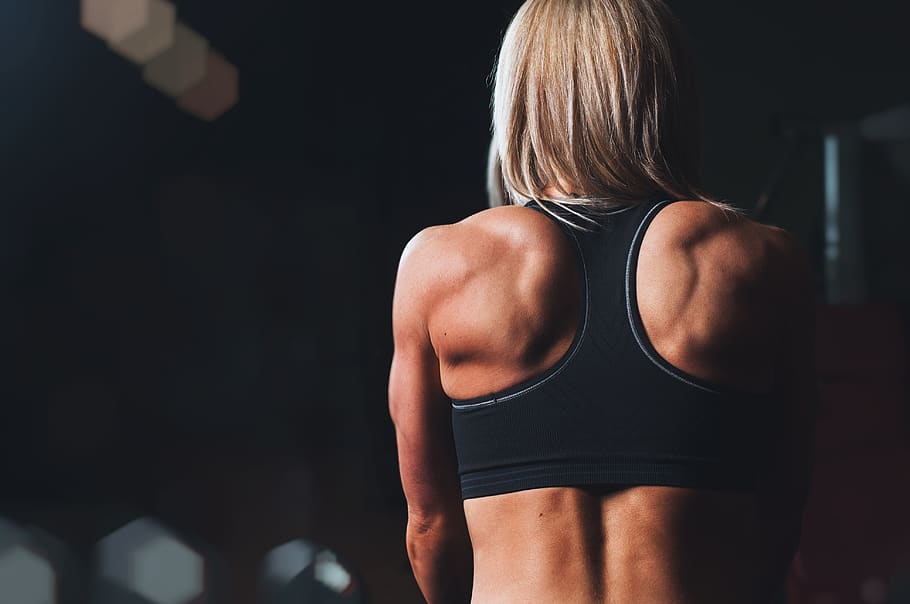
Saturday – Back & Biceps
Wide-Grip Pull-Ups
- Preparation: Begin by gripping the pull-up bar with your hands wider than shoulder-width apart. Hang with your arms fully extended.
- Execution: Pull yourself up until your chin is just above the bar level, focusing on squeezing your back muscles at the top of the movement. Lower yourself back down with control. This exercise primarily targets the latissimus dorsi.
- Sets and Reps: 4 sets of 6-8 reps. If you find pull-ups challenging, consider using an assisted pull-up machine or resistance bands for support.
Bent Over Rows
- Preparation: With feet shoulder-width apart, hold a barbell with a pronated grip. Bend your knees slightly and lean forward by bending at the waist while keeping your back straight.
- Execution: Hold the barbell at arm’s length directly under your shoulders. Lift the bar towards your lower chest by retracting your shoulder blades and bending your elbows. Lower the bar back to the starting position in a controlled manner.
- Sets and Reps: 3 sets of 8-10 reps. Ensure that you keep your back parallel to the ground throughout the exercise to effectively engage the back muscles.
EZ Bar Bicep Curls
- Preparation: Stand straight with an EZ Curl Bar held in both hands at arm’s length. Your grip should be shoulder-width with elbows close to the torso.
- Execution: Keeping your upper arms stationary, exhale as you curl the weights while contracting your biceps. Continue to raise the weights until your biceps are fully contracted and the bar is at shoulder level. Slowly begin to lower the bar back to the starting position.
- Sets and Reps: 3 sets of 10-12 reps. Focus on a slow and controlled movement to maximize bicep engagement and minimize momentum use.
Hammer Curls
- Preparation: Begin by standing with a straight torso, a dumbbell in each hand held at arm’s length. The elbows should be close to the torso.
- Execution: Without moving your upper arms, curl the weights forward while contracting the biceps until your biceps are fully contracted and the dumbbells are at shoulder level. Hold the contracted position for a brief pause as you squeeze your biceps. Slowly start to bring the dumbbells back to the starting position.
- Sets and Reps: 4 sets of 8-10 reps. This exercise is excellent for targeting both the biceps and forearm muscles due to the hammer grip.
Sunday – Active Rest
Take this day to engage in light activities that promote recovery and well-being. This may include a leisurely walk in the park, a light bike ride, yoga for flexibility and core strength, or even swimming. The goal is to keep the body moving without exerting stress on the muscles that are recovering from the week’s workouts.
By diversifying the workout routine and incorporating dedicated days for each muscle group, individuals can target their muscles more effectively, leading to improved strength, size, and endurance. Mixing up the exercises and rep ranges will keep the workouts engaging and help prevent plateaus in muscle growth and strength gains. Remember, consistency coupled with proper nutrition and recovery is key to achieving and maintaining your fitness goals.
Monday – Chest, Shoulders & Triceps
Barbell Bench Press
- Preparation: Lie on a flat bench with your feet planted firmly on the ground. Hold onto the bar with an overhand grip slightly wider than shoulder-width.
- Execution: Lower the bar slowly until it touches your chest, then push it back up to the starting position while keeping your elbows tucked in at a 45-degree angle to your body. Focus on squeezing the chest muscles at the top of the movement.
- Sets and Reps: 4 sets of 6-8 reps. If performing heavy bench presses, have a spotter assist you for safety.
Dumbbell Shoulder Press
- Preparation: Begin by sitting with an upright torso and a dumbbell in each hand. Position the dumbbells at shoulder level, palms facing forward.
- Execution: Exhale as you push the weights up overhead until your arms are fully extended. Hold for a brief pause, then slowly lower the weights back to shoulder level.
- Sets and Reps: 3 sets of 10-12 reps. Focus on a slow and controlled movement to engage the shoulder muscles.
Tricep Dips
- Preparation: Start by sitting on a bench or chair with your hands placed next to your hips, fingers facing forward. Extend your legs out in front of you with a slight bend in the knees.
- Execution: Lower yourself by bending at the elbows until your arms are at a 90-degree angle. Push yourself back up to the starting position by straightening your arms.
- Sets and Reps: 4 sets of 8-10 reps. To increase difficulty, place weight plates on your thighs or use a dip machine for added resistance.
Cable Tricep Pushdowns
- Preparation: Attach a rope to the high pulley of a cable machine. Stand facing the machine with a slight bend in your knees and your elbows tucked in at your sides.
- Execution: Exhale as you push the rope down until your arms are fully extended, then hold for a brief pause before slowly bringing it back up to the starting position.
- Sets and Reps: 3 sets of 12-15 reps. Focus on squeezing the triceps at the bottom of the movement for maximum muscle engagement.
Tuesday – Active Rest
Similar to Sunday, use this day to engage in light activities that promote recovery and well-being. This could include low-intensity cardio, stretching, or even a restorative yoga class. Remember to listen to your body and take rest days when needed for optimal recovery.
Wednesday – Back & Biceps
Deadlifts
- Preparation: Begin by standing with your feet shoulder-width apart, toes under the bar. Bend your knees and hips to lower yourself down to grasp the bar with an overhand grip.
- Execution: With a neutral spine, push through your heels and extend your hips and knees, pulling the bar up along your thighs until you are standing upright. Hold for a brief pause, then slowly lower the bar back to the starting position.
- Sets and Reps: 4 sets of 6-8 reps. Use proper form and technique to avoid injury when performing this compound exercise.
Lat Pulldowns
- Preparation: Sit at a lat pulldown machine with your knees secured under the pads. Grasp the bar with an overhand grip slightly wider than shoulder-width.
- Execution: Keeping your torso stationary, exhale as you pull the bar down toward your chest while keeping your elbows close to your body. Hold for a brief pause before slowly returning to the starting position.
- Sets and Reps: 3 sets of 10-12 reps. Focus on engaging your lats and avoiding swinging or using momentum to complete the movement.
Seated Dumbbell Curls
- Preparation: Begin by sitting with an upright torso and a dumbbell in each hand, palms facing forward. Keep your elbows close to your sides.
- Execution: Exhale as you curl the weights up toward your shoulders, keeping your wrists straight and elbows still. Hold for a brief pause at the top before slowly lowering back down.
- Sets and Reps: 4 sets of 8-10 reps. To increase difficulty, alternate arms or perform hammer curls with palms facing inward.
Thursday – Active Rest
Similar to Sunday and Tuesday, use this day for light activities such as yoga or a leisurely bike ride. It’s important to allow your muscles time to recover in order to prevent injury and maintain progress.
Friday – Legs & Glutes
Squats
- Preparation: Begin by standing with feet shoulder-width apart, toes slightly pointed out. Hold onto a barbell with an overhand grip, resting on your shoulders behind your head.
- Execution: Keeping your chest up and core engaged, push your hips back and bend at the knees to lower yourself into a squat position. Push through your heels to return to the starting position.
- Sets and Reps: 4 sets of 6-8 reps. Use proper form and start with lighter weight to avoid strain or injury.
Lunges
- Preparation: Stand with your feet hip-width apart and hold dumbbells by your sides. Step forward with one leg, bending at the knee until your thigh is parallel to the ground.
- Execution: Push through your front heel to return to the starting position, then repeat on the other leg. Alternate legs for desired reps.
- Sets and Reps: 3 sets of 12-15 reps per leg. To increase difficulty, hold onto heavier weights or add a calf raise at the end of each lunge.
Glute Bridges
- Preparation: Lie face up on the ground with your knees bent and feet flat on the floor. Place a resistance band above your knees, then lift your hips off the ground until your body forms a straight line from shoulders to knees.
- Execution: Squeeze your glutes and core as you push through your heels to raise your hips higher, then lower back down with control.
- Sets and Reps: 3 sets of 15-20 reps. To increase difficulty, place a weight plate on your hips or use a resistance band with higher tension.
You are probably wondering why did I include lower body workouts in this routine, right? Well, the inclusion of dedicated days for legs and core ensures a comprehensive approach to fitness, promoting not only the growth and strengthening of these vital muscles but also improving overall body stability and performance.
Frequently Asked Questions (FAQs)
Here are answers to some of the commonly asked questions when it comes to the best upper body workout.
What Is the Best Upper Body Workout for Beginners?
For beginners, it’s essential to start with exercises that have a lower risk and a more manageable learning curve. Using weight machines can be a suitable tool for those new to the gym environment. Incline and flat bench presses, seated chest presses, and shoulder press machines are great starter exercises.
How Often Should I Train My Upper Body?
Consistency is critical, but so is recovery. Aim to train your upper body 2-3 times per week, with at least one full day of rest between each workout to give your muscles time to repair and grow.
Should I Do Cardio Along with Upper Body Workouts?
Including cardio in your fitness routine is beneficial for overall health and can complement your upper body workouts. Doing cardio on your off days can help with recovery and can also contribute to fat loss.
Can I Work Out Upper and Lower Body on the Same Day?
It is definitely possible to train both upper and lower body on the same day, and many workout programs are designed with this approach. Full-body workouts can be very efficient, especially if you’re short on time or unable to go to the gym frequently. However, it’s important to monitor your recovery and avoid overtraining.
How Long Should I Rest Between Upper Body Workouts?
Rest periods between upper body workouts should ideally be 48-72 hours. This allows the muscles adequate time to recover and rebuild stronger. If you’re targeting different muscle groups (e.g., back and biceps one day, chest and triceps the next), you might be able to schedule your workouts closer together.
Is It Better to Lift Heavy Weights or Do More Reps?
Whether you should lift heavy weights with fewer repetitions or lighter weights with more repetitions depends on your fitness goals. Lifting heavier weights is typically associated with increased strength and muscle size, while lighter weights and higher reps are often used for endurance and toning. Both approaches are beneficial and can be alternated or combined in a workout plan for balanced results.
Conclusion
Upper body workouts don’t just sculpt your chest, shoulders, and triceps; they improve your posture, give you functional strength, and bolster your confidence. With dedication to form, routine, and a well-balanced diet, you will be able to achieve your fitness goals and witness the satisfying transformation of your upper body.
Remember, seeing significant change takes time and persistence, so stay committed to the process and enjoy the journey to a stronger, more muscular upper body.



